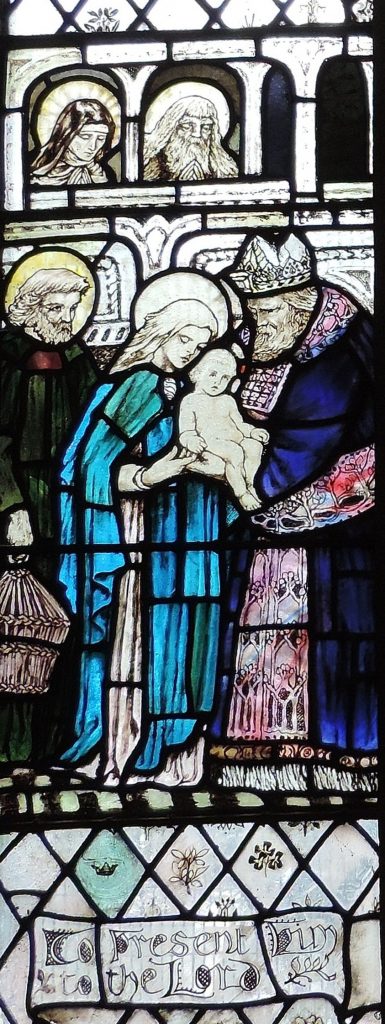The second of February is celebrated in many churches as Candlemas. Where does the name come from and what is being celebrated?
At the time of Jesus’ birth, there were strict requirements placed on parents following the birth of a child. The first of these, if it was a boy, was circumcision at 8 days old. This was spelled out in the Torah – the Hebrew scripture. In the Bible it is in Genesis chapter 17 verse 12 and repeated in Leviticus chapter 12 verse 3.
The second requirement was that the mother had to be ‘purified’ as she was classed as ‘unclean’ until this ritual was performed. When this took place depended on whether the child was a boy or a girl. If it was a boy it was at 40 days, if a girl at 80 days, after the birth. This ritual was carried out in the Temple in Jerusalem, with the appropriate offerings for sacrifice. The details are spelled out in Leviticus chapter 12 verses 1 to 8. A second ritual being performed that day was the dedication of the first-born to God. Exodus chapter 13 verse 2 states that every first born, including animals, was to be dedicated to God. So Joseph and Mary brought Jesus to dedicate him. That answers the question of why there is a celebration on 2nd February – it is 40 days (inclusively) after Christmas Day. The nature of the celebration takes a little longer to explain.
When the family went into the temple they encountered two people, Simeon and Anna, who are mentioned in Luke’s Gospel. There is very little about Anna, other than that she was a widow, very devout and very old. Simeon appears to have been a priest and he had a conviction that he would see God’s salvation before he died. As soon as he saw the baby, he recognised that here was the fulfilment of God’s promise. He then spoke what we now call the Nunc Dimittis (the name is simply the first two words as written in Greek). In it he said that the baby Jesus would be ‘a light for revelation to the Gentiles’. Light was produced using oil lamps and later using candles. That is where the term Candlemas comes from.

In St Mary’s Chapel one section of the large stained glass window in the apse, shown in the photograph, depicts the scene, but with a level of ‘artistic licence’. Mary and Joseph are presenting Jesus to the priest in his robes. Interestingly, Joseph is carrying a little cage with two birds in it. The details of the sacrifice given in Leviticus chapter 12 verse 6 is for an offering of a lamb and a young pigeon or dove. However, verse 8 of the same chapter indicates that if the family cannot afford a lamb, a second pigeon or dove may be substituted. Luke’s Gospel states the offering made was of two birds, indicating that Joseph was a poor man. The window has a stylised colonnade, with two people looking on. These are Simeon and Anna, seeing the child being offered to God. The scroll below says ‘To present Him to the Lord’.